Intro
Identify 7 bruised ribs symptoms, including chest pain, difficulty breathing, and rib tenderness, to seek medical help for proper diagnosis and treatment of rib injuries and fractures.
Bruised ribs can be a painful and debilitating condition, affecting daily activities and overall well-being. The importance of understanding the symptoms of bruised ribs cannot be overstated, as prompt medical attention can significantly improve recovery outcomes. In this article, we will delve into the world of bruised ribs, exploring the various symptoms, causes, and treatment options available. Whether you're an athlete, an individual who has experienced a recent injury, or simply someone looking to expand your knowledge on the subject, this article aims to provide valuable insights and information.
Bruised ribs, also known as rib contusions, occur when the ribs are subjected to a direct blow or trauma, causing damage to the blood vessels, muscles, and bones in the surrounding area. This can lead to a range of symptoms, from mild discomfort to severe pain, making it essential to recognize the warning signs and seek medical attention if necessary. The symptoms of bruised ribs can vary in severity and duration, depending on the extent of the injury and individual factors, such as overall health and age.
The human ribcage is a complex structure, comprising 24 ribs, cartilage, and muscles that work together to protect vital organs, including the heart and lungs. When the ribs are bruised, it can affect not only the surrounding muscles and bones but also the internal organs, leading to a range of complications. Understanding the symptoms of bruised ribs is crucial in preventing further injury and promoting effective treatment. In the following sections, we will explore the various symptoms of bruised ribs, including pain, tenderness, and breathing difficulties, as well as the causes, diagnosis, and treatment options available.
Bruised Ribs Symptoms and Signs
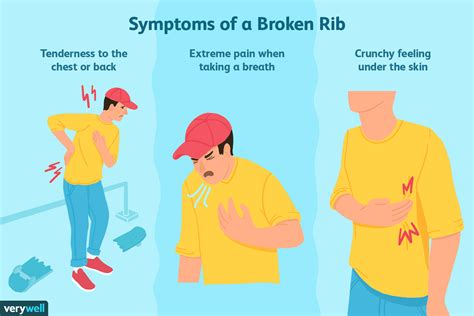
Common Symptoms of Bruised Ribs
Some common symptoms of bruised ribs include: * Pain or tenderness in the chest or ribcage area * Breathing difficulties, such as shortness of breath or coughing * Mobility issues, making it difficult to move or twist * Swelling or bruising in the affected area * Limited range of motion in the shoulders or arms * Fatigue or exhaustion due to pain and discomfortCauses and Risk Factors of Bruised Ribs
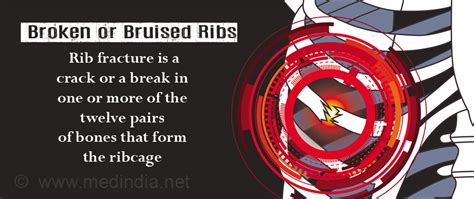
Risk Factors for Bruised Ribs
Some risk factors for bruised ribs include: * Participating in contact sports, such as football or hockey * Having a pre-existing medical condition, such as osteoporosis * Being involved in a car accident or other traumatic event * Falling or experiencing a direct blow to the chest or ribcage * Engaging in activities that involve heavy lifting or bendingDiagnosis and Treatment of Bruised Ribs

Treatment Options for Bruised Ribs
Some treatment options for bruised ribs include: * Pain management, using medications such as acetaminophen or ibuprofen * Rest and relaxation, avoiding heavy lifting or bending * Physical therapy, to improve mobility and strength * Breathing exercises, to promote lung function and expansion * Surgery, in severe cases where the bruised ribs are affecting internal organsComplications and Prevention of Bruised Ribs
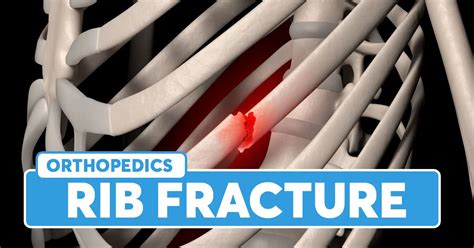
Prevention Strategies for Bruised Ribs
Some prevention strategies for bruised ribs include: * Wearing protective gear, such as chest protectors or pads, during sports * Avoiding falls, using handrails or non-slip mats * Maintaining good overall health, through regular exercise and a balanced diet * Avoiding heavy lifting or bending, taking regular breaks * Seeking medical attention, if symptoms persist or worsenRecovery and Rehabilitation of Bruised Ribs
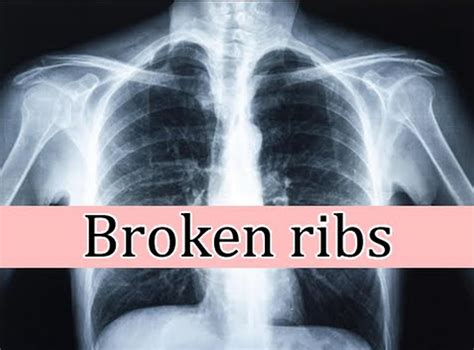
Rehabilitation Tips for Bruised Ribs
Some rehabilitation tips for bruised ribs include: * Following a healthcare professional's advice and guidance * Taking regular breaks, avoiding heavy lifting or bending * Engaging in gentle exercises, such as deep breathing or shoulder rolls * Maintaining good posture, avoiding slouching or twisting * Seeking support, from family, friends, or support groupsConclusion and Final Thoughts
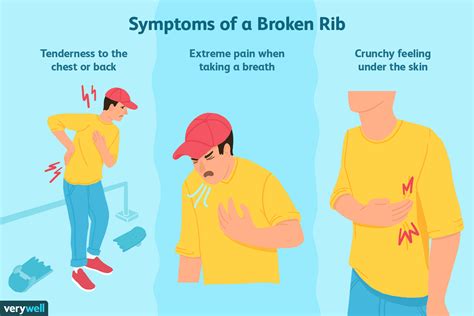
We hope this article has provided valuable insights and information on the topic of bruised ribs. If you have any questions or comments, please don't hesitate to share them below. Your feedback is important to us, and we look forward to hearing from you.
What are the symptoms of bruised ribs?
+The symptoms of bruised ribs include pain, tenderness, breathing difficulties, and mobility issues. Pain can range from a dull ache to severe, sharp pain, depending on the severity of the injury.
How are bruised ribs diagnosed?
+Bruised ribs are typically diagnosed through a physical examination, medical history, and imaging tests, such as X-rays or CT scans.
What are the treatment options for bruised ribs?
+Treatment options for bruised ribs include pain management, rest, and physical therapy. In some cases, hospitalization may be necessary to monitor and manage complications.
